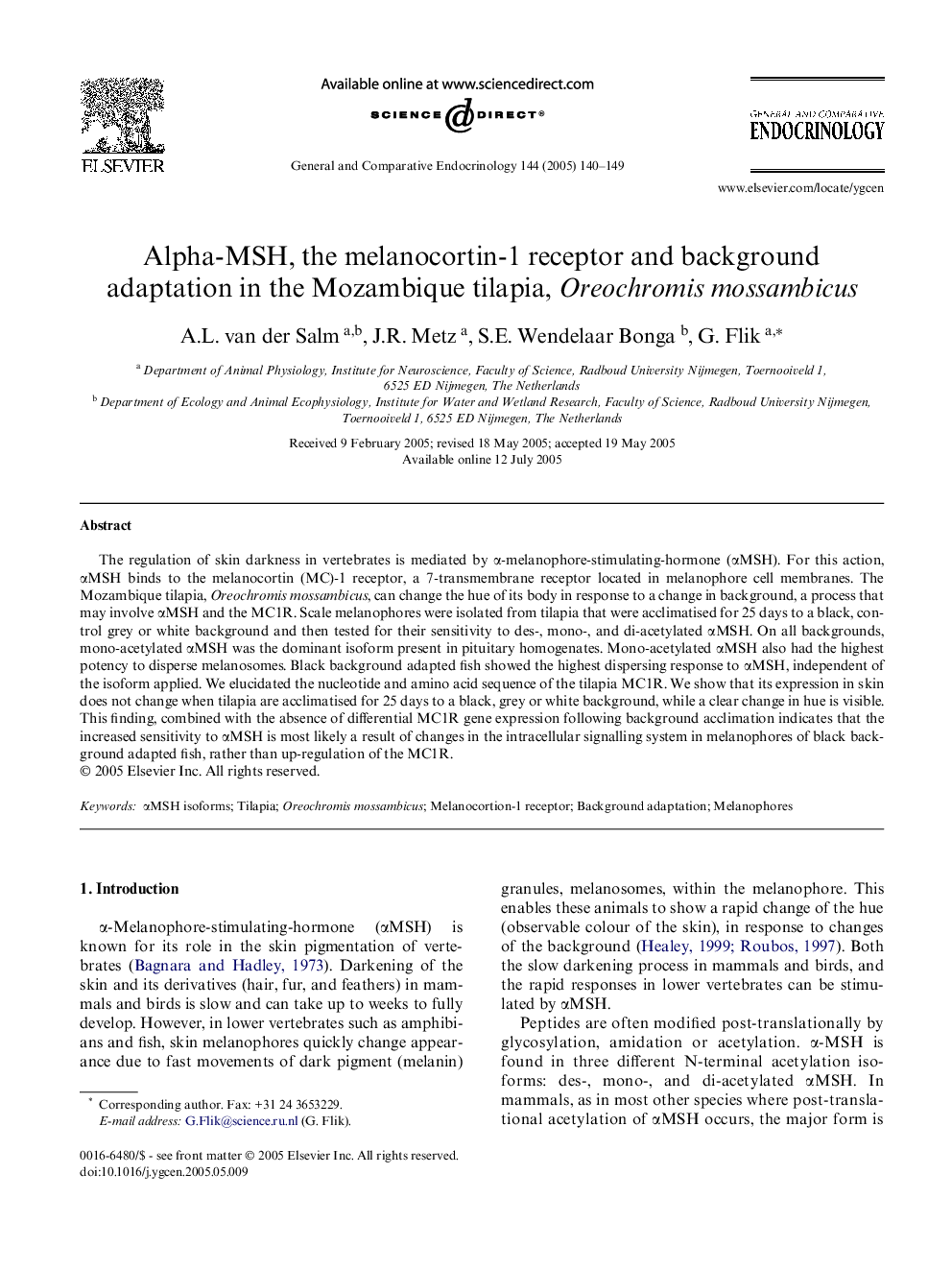| Article ID | Journal | Published Year | Pages | File Type |
|---|---|---|---|---|
| 9113061 | General and Comparative Endocrinology | 2005 | 10 Pages |
Abstract
The regulation of skin darkness in vertebrates is mediated by α-melanophore-stimulating-hormone (αMSH). For this action, αMSH binds to the melanocortin (MC)-1 receptor, a 7-transmembrane receptor located in melanophore cell membranes. The Mozambique tilapia, Oreochromis mossambicus, can change the hue of its body in response to a change in background, a process that may involve αMSH and the MC1R. Scale melanophores were isolated from tilapia that were acclimatised for 25 days to a black, control grey or white background and then tested for their sensitivity to des-, mono-, and di-acetylated αMSH. On all backgrounds, mono-acetylated αMSH was the dominant isoform present in pituitary homogenates. Mono-acetylated αMSH also had the highest potency to disperse melanosomes. Black background adapted fish showed the highest dispersing response to αMSH, independent of the isoform applied. We elucidated the nucleotide and amino acid sequence of the tilapia MC1R. We show that its expression in skin does not change when tilapia are acclimatised for 25 days to a black, grey or white background, while a clear change in hue is visible. This finding, combined with the absence of differential MC1R gene expression following background acclimation indicates that the increased sensitivity to αMSH is most likely a result of changes in the intracellular signalling system in melanophores of black background adapted fish, rather than up-regulation of the MC1R.
Related Topics
Life Sciences
Biochemistry, Genetics and Molecular Biology
Endocrinology
Authors
A.L. van der Salm, J.R. Metz, S.E. Wendelaar Bonga, G. Flik,
